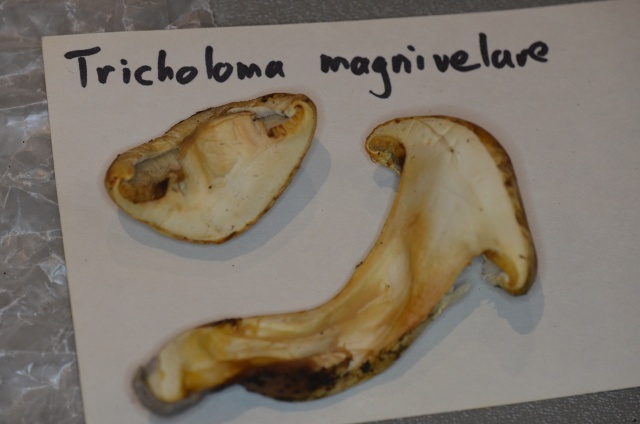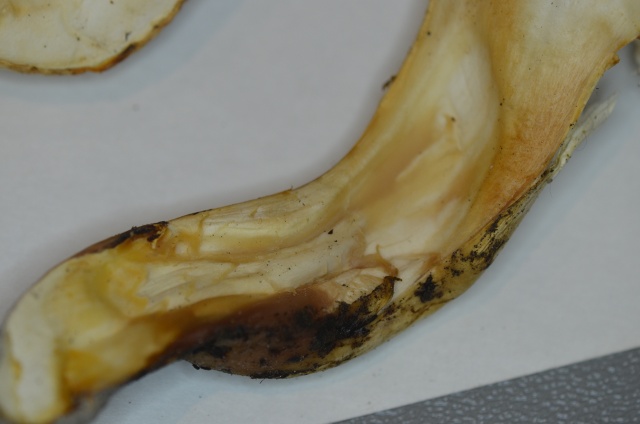35) Laccaria Laccata
Also called: The deceiver, or waxy laccaria
Laccaria Laccata is said to be edible
It is a highly variable mushroom (hence the name “deceiver”). This mushroom
can look quite washed out, colorless and drab,
but when younger it often assumes red, pinkish brown, and orange tones. (from Wikipedia.com)
The gills are often thick and a little waxy,
and are usually purple, pinkish, or flesh-colored.
The cap colors range from whitish to, more commonly, orangish brown
or reddish brown--while a few species are purple. Laccarias are never
slimy, which helps in separating them from the waxy caps, and their
gills are attached to the stem but do not run down it,
helping distinguish them from clitocyboid mushrooms. You must
have fresh, young specimens available in
order to judge the color (whitish or lilac) of the basal mycelium (from Mushroomexpert.com)

